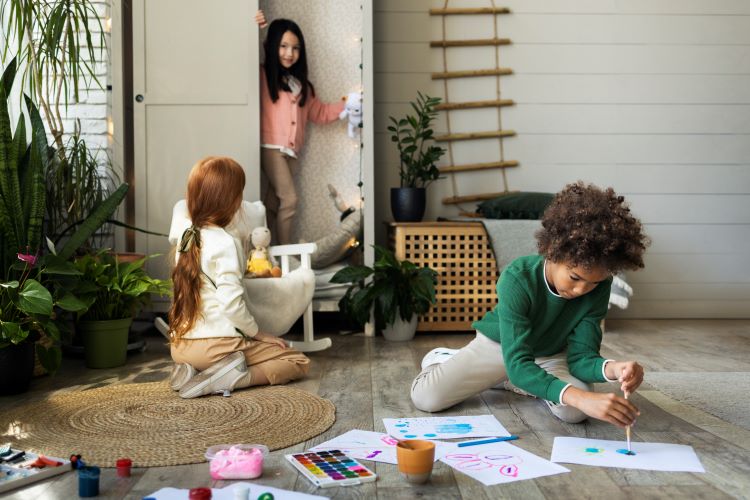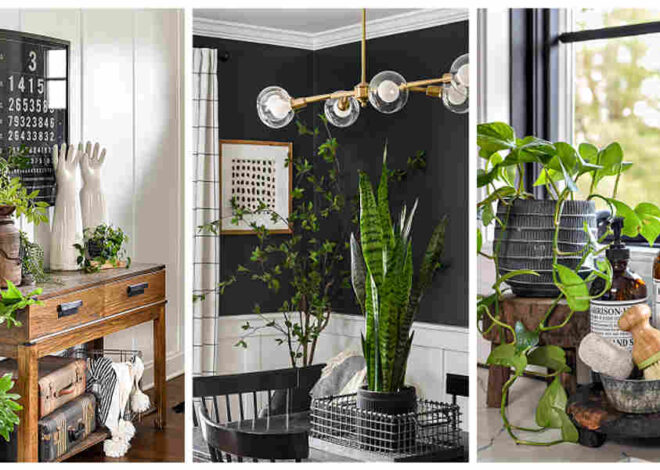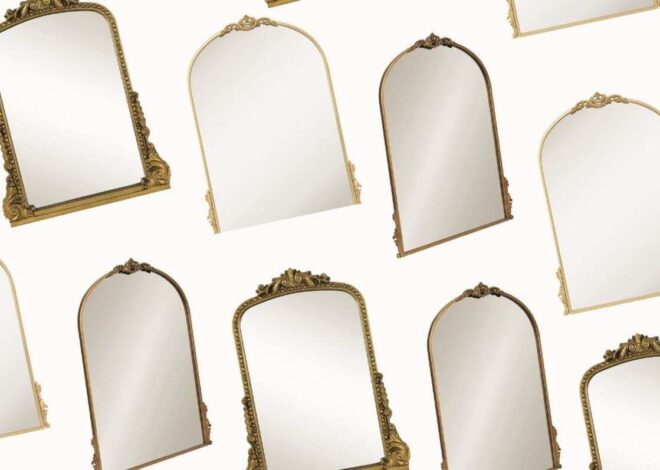
How Color Psychology Can Transform Your Home’s Mood
Did you know that the colors you choose to decorate your home with can have a significant impact on your mood and overall well-being? That’s right, color psychology is a fascinating field that explores how different colors can evoke various emotions and feelings.
Step into a world where colors hold the power to shape our moods and transform the ambiance of our homes. Imagine walking into a room that instantly uplifts your spirits or relaxes your mind, all thanks to the strategic use of color psychology. Today, we delve into the fascinating realm of how different hues can influence our emotions and create spaces that resonate with positivity and tranquility. Welcome to a journey where paintbrush meets psychology, unveiling the secrets behind creating harmonious living environments through the art of color selection.
Basics of color psychology: understanding warm vs cool tones, primary colors, and their meanings
Color psychology is a fascinating subject that delves into the impact of different hues on our emotions and perceptions. It all begins with understanding the fundamental differences between warm tones, like reds and yellows, which tend to evoke feelings of energy and passion, and cool tones, such as blues and greens, known for their calming and soothing effects.
Primary colors play a vital part in color brain research as well. Red signifies strength, passion, and excitement; yellow represents joy, warmth, and optimism; while blue conveys tranquility, trustworthiness, and stability. Each primary color carries its unique set of meanings that can influence how we feel in a particular space.
By grasping these basics of color psychology, you can start to create harmonious environments that cater to your desired mood or ambiance. Whether it’s incorporating warm tones for a cozy living room or opting for cool hues in a serene bedroom retreat – the possibilities are endless when you understand the power of colors around us.
You may also read (6 story house)
How different colors can evoke specific emotions
Colors have the power to influence our emotions and feelings in profound ways. For example, red is known to evoke passion, energy, and excitement. It can create a sense of urgency or intensity in a room. On the other hand, blue is regularly related with calmness, quietness, and relaxation. It has a soothing effect that can help reduce stress levels.
Yellow is a vibrant color that symbolizes happiness, positivity, and optimism. It can bring warmth and cheerfulness to a space. Green represents nature, growth, and harmony. This color is refreshing and rejuvenating for both the mind and body.
Purple conveys luxury, creativity, and spirituality. It adds a touch of elegance to any room it’s used in. Orange radiates energy, enthusiasm, and warmth. It can create an inviting atmosphere that encourages social interaction.
Each color carries its own unique set of emotions and associations that can significantly impact the mood of your home environment.
Using color brain research in insides plan: tips and tricks
Color psychology plays a pivotal role in transforming the mood of your home through interior design. By understanding how different colors can evoke specific emotions, you can create a harmonious and balanced living space. Warm tones like reds, oranges, and yellows are known to energize and stimulate, perfect for spaces where social interaction thrives such as the living room or dining area.
It’s fundamental to consider the reason of each room when choosing color plans. For example, vibrant hues like yellow or orange can add warmth and energy to an otherwise dull space. Soft pastel shades like light blue or lavender promote relaxation and tranquility.
Experimenting with different color combinations can truly elevate the atmosphere of your home while reflecting your personal style and taste in interior design.
Choosing the right color schemes for each room based on its purpose (e.g. calm colors for bedrooms, energizing colors for living rooms)
When it comes to choosing the right color schemes for each room in your home, it’s essential to consider the purpose of that space. Bedrooms, for example, should evoke a sense of calm and relaxation. Opt for relieving tones like delicate blues, tender greens, or lavender tones to make a quiet air conducive to serene sleep.
On the other hand, living rooms are often high-traffic areas where you entertain guests and spend time with family. To energize these spaces, consider incorporating vibrant colors such as bold reds, warm yellows, or invigorating oranges. These shades can help foster lively conversations and create a welcoming ambiance.
For home offices or study areas where focus is key, opt for neutral tones like whites, creams, or light grays to promote concentration and productivity. Experimenting with different color palettes based on each room’s function can truly transform the mood and overall feel of your home.
Case studies/examples of homes with effective use of color psychology
Step into the world of homes changed by the control of color psychology. Imagine a cozy bedroom painted in soothing shades of blue, creating a serene oasis for rest and relaxation. The calming effect of this color promotes better sleep and reduces stress levels.
In contrast, picture a vibrant living room adorned with energizing tones like yellow and orange. These warm hues stimulate conversation and activity, making it the perfect space for social gatherings and lively discussions.
Now envision a home office bathed in invigorating greens, fostering creativity and productivity. This refreshing color boosts focus and concentration, enhancing work performance.
Each room tells a unique story through its carefully chosen colors, showcasing how simple yet impactful changes can significantly influence mood and atmosphere within a home.
The importance of natural light
Natural light is a crucial element in enhancing the effects of color psychology within your home. It can influence how colors appear and interact with each other, ultimately shaping the mood of a space. When planning your interior design based on color psychology, consider how natural light enters each room throughout the day.
To make the most of natural light, opt for lighter shades to bounce and amplify sunlight, creating an airy and open atmosphere. Position furniture strategically to maximize daylight exposure and choose window treatments that allow light to filter through while maintaining privacy when needed.
By harnessing the power of both color psychology and natural light in your home, you can create harmonious spaces that not only look beautiful but also positively impact your well-being. Experiment with different color schemes and lighting arrangements to find what works best for each room’s intended purpose. With thoughtful consideration and creativity, you can transform your home into a sanctuary that uplifts your mood every day.
You may also read (is tesla making tiny houses)


